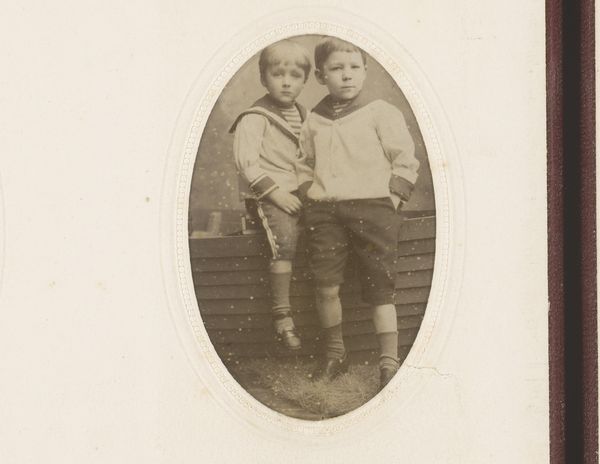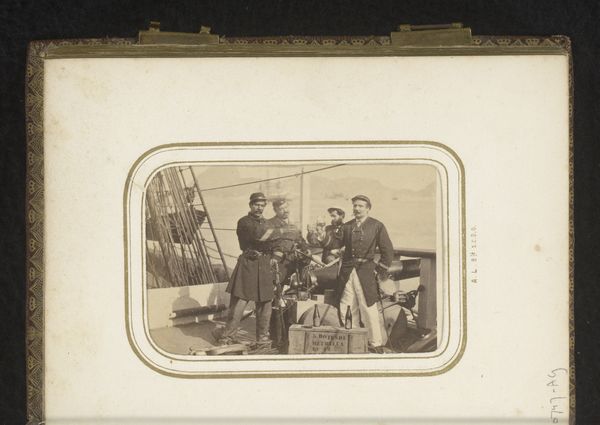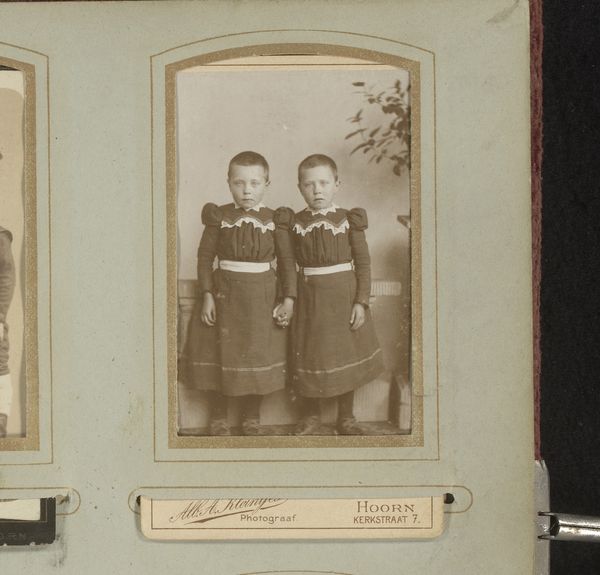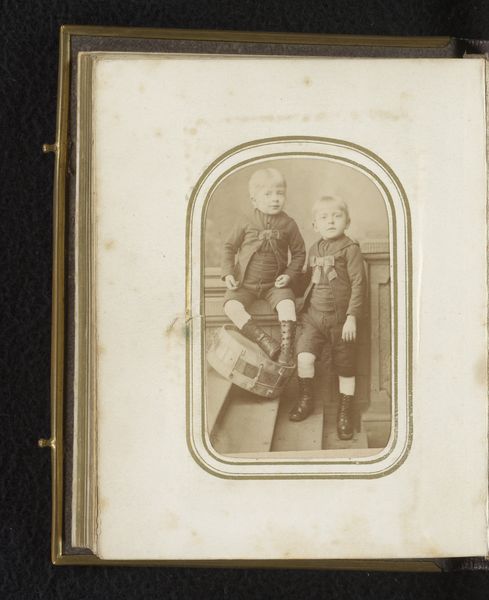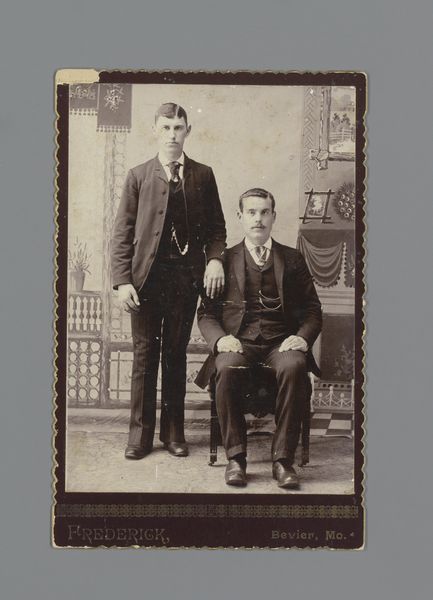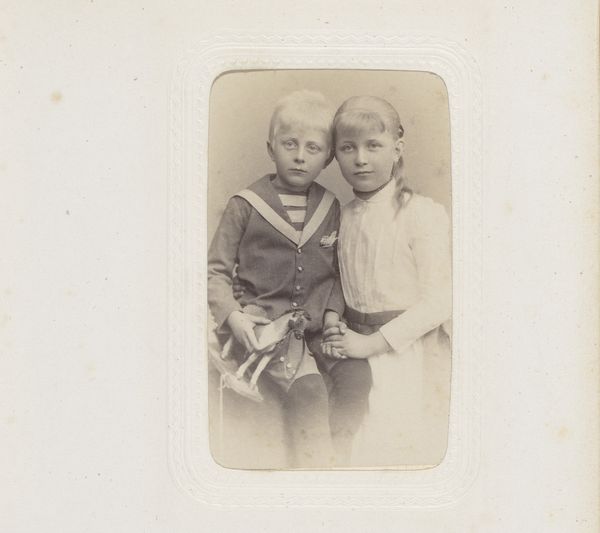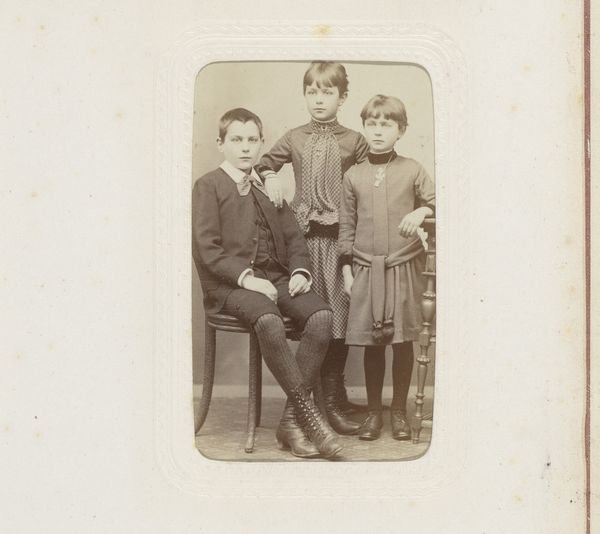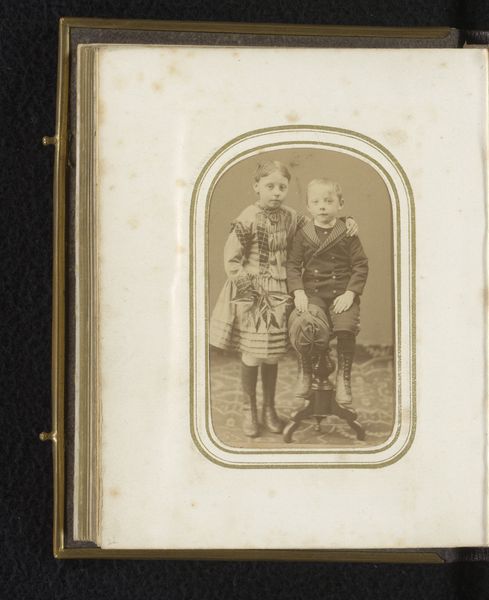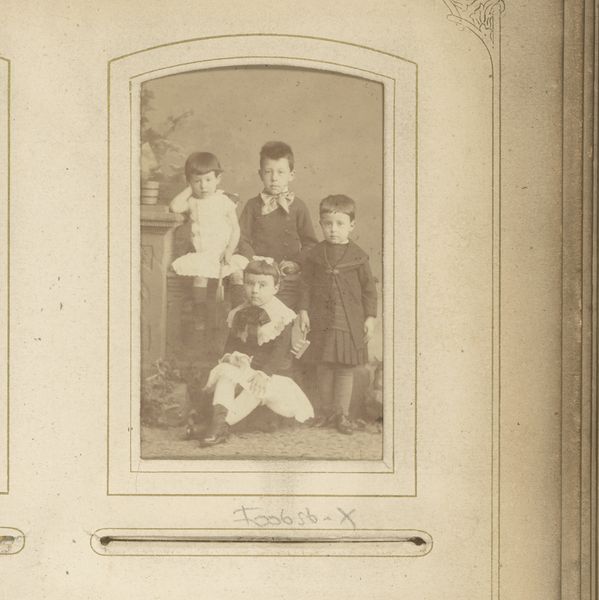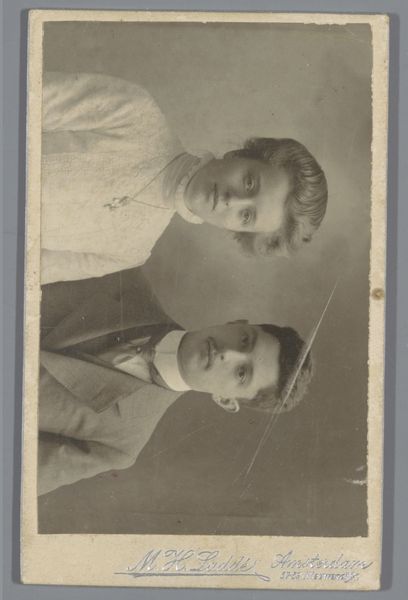
photography
#
portrait
#
historical design
#
photography
#
historical fashion
#
genre-painting
Dimensions: height 52 mm, width 74 mm
Copyright: Rijks Museum: Open Domain
Curator: This photographic print, "Dicky Baud en drie andere jongens spelend in een tuin", dated circa 1930 to 1935, offers an intimate glimpse into childhood in that era. What strikes you immediately? Editor: The immediate impact is its charming formality amidst childish play. There's a real juxtaposition of their 'Sunday best' clothing and the rough and tumble game. It’s fascinating, actually. Curator: Absolutely. The clothing indicates certain social expectations, even within the informal space of the garden. Their clothing signifies a rising middle class, and that's an important visual marker in understanding childhood ideals of the time. This image opens pathways to investigating how identity is formed. Editor: Visually, I'm intrigued by how the architecture almost echoes the boy's postures. The strong verticals of the building in the background seem to align with the figures in the photograph. Curator: An interesting mirroring indeed! And it speaks to ideas around constructedness: the architecture of social norms, and how they impact play, boyhood, camaraderie… Look at how they mirror each other. The expressions range from a toothy grin to something less enthusiastic. Editor: Exactly! The boy on the right, with the more solemn face, creates a striking counterpoint to the beaming child on the left. I wonder what narratives this photograph held within that family, and also more broadly in a time between wars, and the meaning of childhood safety and perhaps a false sense of security at that moment. Curator: It raises many compelling questions around the weight of societal pressures in what should ideally be a carefree space of childhood. Their postures signify burden-bearing for their carriers; yet for the upper-level, riding is power. How these relationships transfer between different situations must surely have consequences. Editor: This photograph almost captures a frozen moment of collective identity and it speaks of cultural codes in black and white tones, in the middle of transformation. I think of it as a fascinating little symbol of an era. Curator: Indeed. It certainly resonates powerfully as a small window into both the freedoms and constraints defining a particular social stratum at this time. Editor: I find the layers here, the composition, and the symbols all bring great emotive weight to the era from the very basic elements of this photographic work. It becomes a signifier, ultimately.
Comments
No comments
Be the first to comment and join the conversation on the ultimate creative platform.

